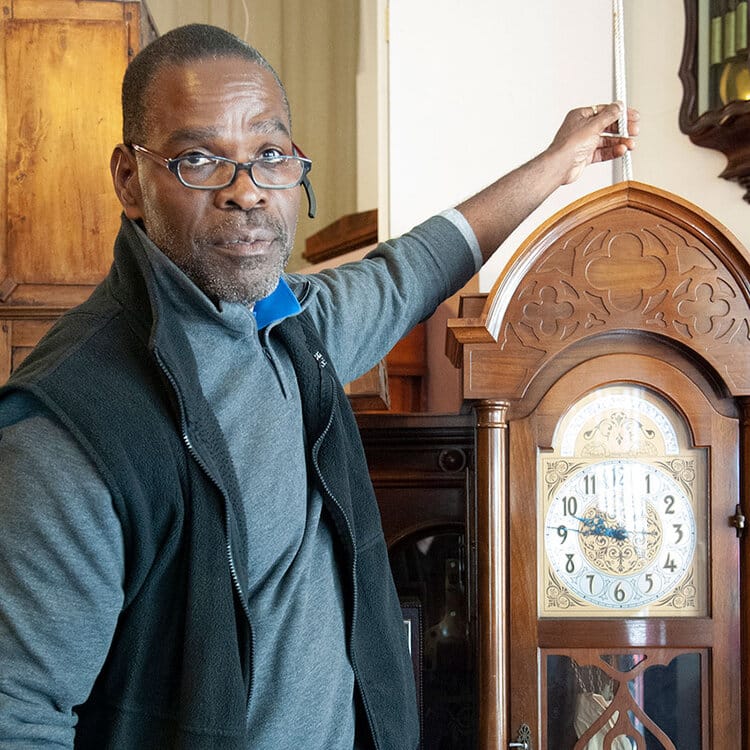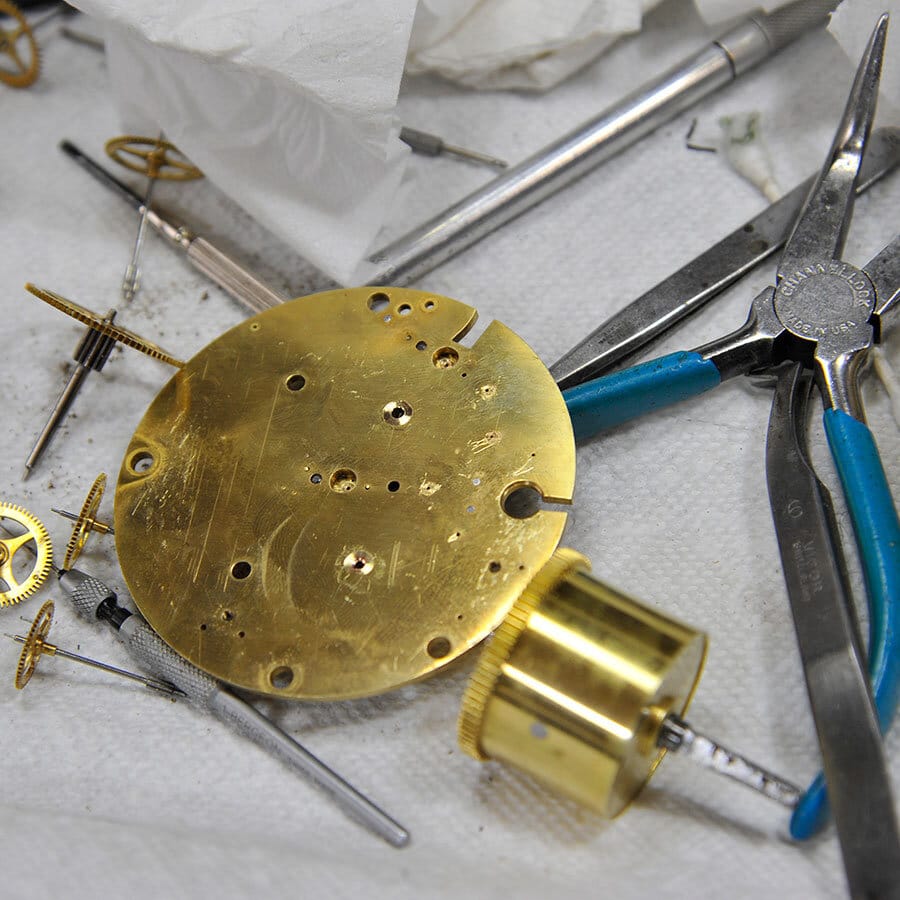
by Tam Putnam
Time takes on an elastic quality at Smith Clock Co. A calm ticking fills the shop, while grandfather clocks chime at random hours. For David Smith, clock restorer, time runs at various speeds: the stately historic time of the clocks, some from the 17th century; the efficient speed of his work as timepiece diagnostician; and the expansive pace of the raconteur who seems not to notice time’s passage.
With every clock, he begins by determining provenance. “It’s like reading a book in a different language,” he says. “You look at the way a French clock is designed, then you look at a Dutch piece – they’re night and day.”

Mechanical clocks like these use a key to wind a mainspring that, in unwinding, turns gears that move the clock’s hands. The ticktock you hear comes from the gear teeth engaging and releasing. Time takes its toll on all these parts.
As a child, Smith frequented his father’s real estate job sites, where former occupants often left furnishings behind. “The clocks were just like gold,” he says. “I started when I was 8, taking them apart and putting things together in different ways. I must have been 10 before someone asked me, ‘Do any of them work?’ It was like, oh, yeah, they’re clocks.” He says it was as if a switch turned on. “I wanted to see things in good shape.”
He went to City College’s clock repair program – which no longer operates – then apprenticed for a decade. He opened a shop on Fillmore before moving to his current location at 2799 Bush St. in what’s now called Lower Pacific Heights.
“It’s only you and the clock,” Smith says. “When the clock comes out just the way you want, that relationship’s special. The clock is the customer.”
Tam Putnam, a writer and editor in San Francisco, co-directs Litquake’s Elder Project and Kidquake programs. This article is part of the reThinkRepair series in San Francisco. To learn more, go to rethink_repair on Instagram and visit www.rethinkrepairprojects.com.





